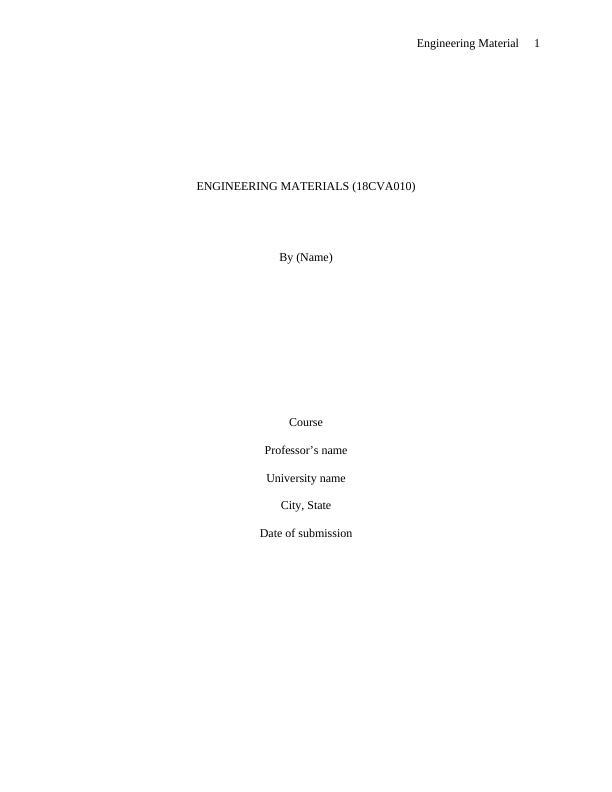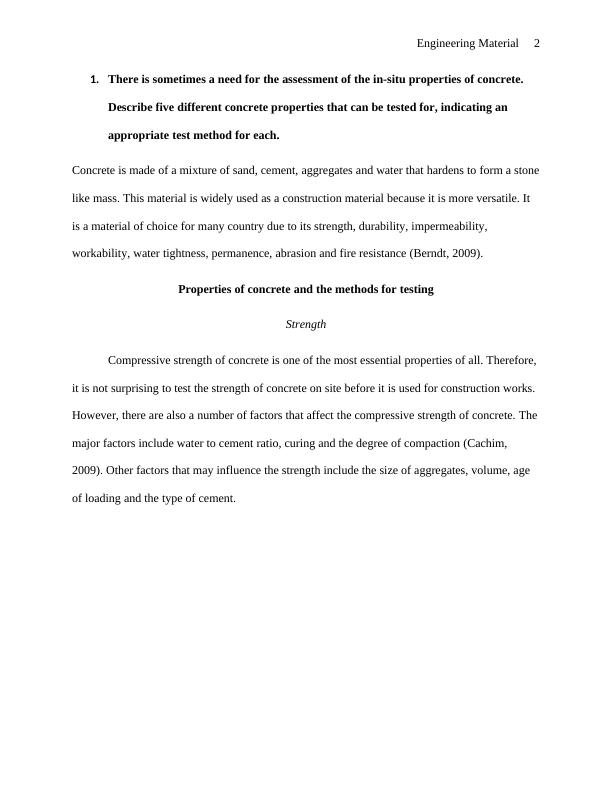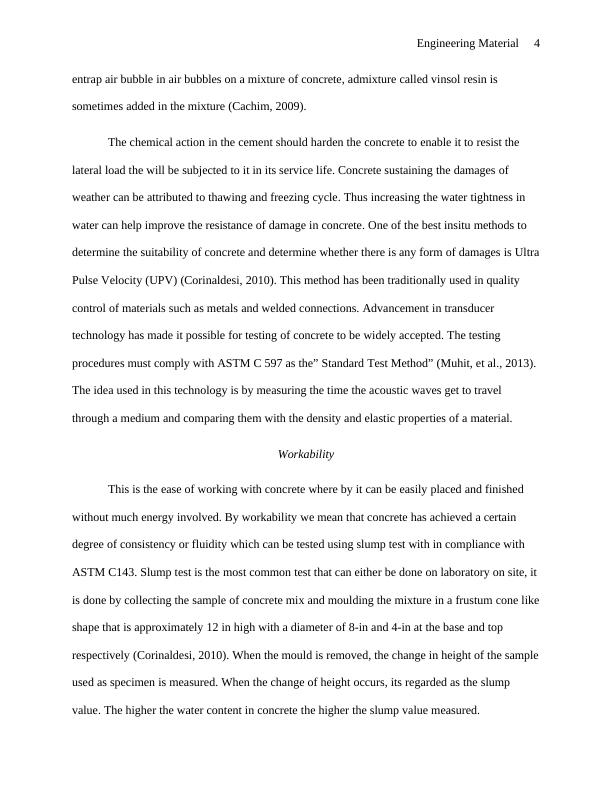Engineering Material: Properties and Testing Methods
Answer questions related to the assessment of in-situ properties of concrete, the rebound hammer as a non-destructive testing device, and the Proceq PUNDIT apparatus for measuring ultrasonic pulse velocity in concrete.
15 Pages3111 Words144 Views
Added on 2023-04-10
About This Document
This document provides an overview of the properties of engineering materials, focusing on concrete. It discusses five different properties of concrete that can be tested, including strength, suitability, workability, and water tightness. The document also explains the working principles of rebound hammers, ultrasonic pulse velocity testing, and covermeters. It is a valuable resource for students studying engineering materials and professionals in the field.
Engineering Material: Properties and Testing Methods
Answer questions related to the assessment of in-situ properties of concrete, the rebound hammer as a non-destructive testing device, and the Proceq PUNDIT apparatus for measuring ultrasonic pulse velocity in concrete.
Added on 2023-04-10
ShareRelated Documents
End of preview
Want to access all the pages? Upload your documents or become a member.
Assignment - 048353 Concrete Design
|10
|2145
|42
Selection of Building Materials: Manufacturing Process, Onsite Installation, Tests, Advantages and Disadvantages
|10
|543
|311
Civil Engineering Materials and Design Assignment 2022
|8
|1585
|7
Construction Defects Assignment PDF
|8
|1596
|201
Civil Engineering | Assignment
|19
|2655
|15
Engineering Materials
|8
|1922
|331




